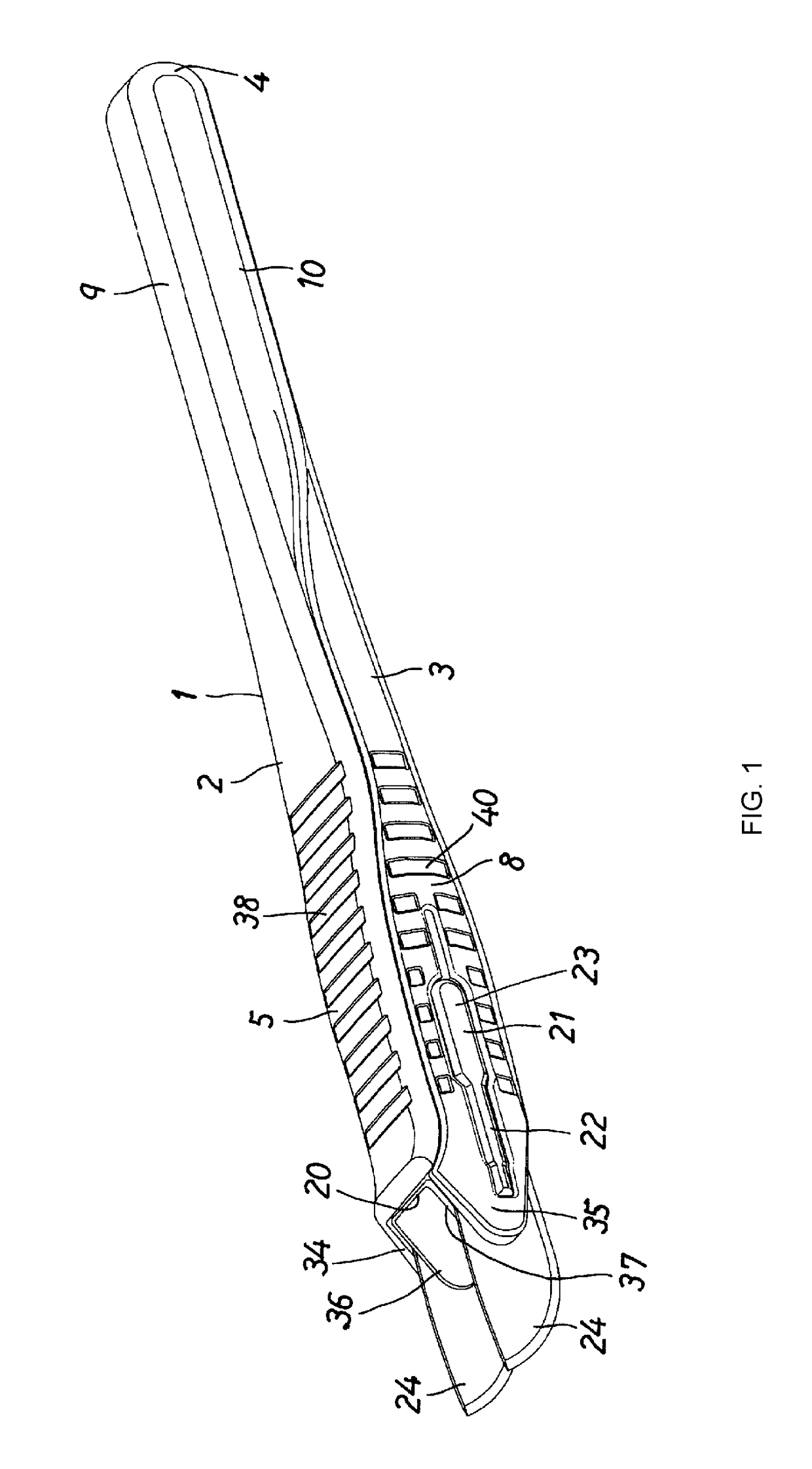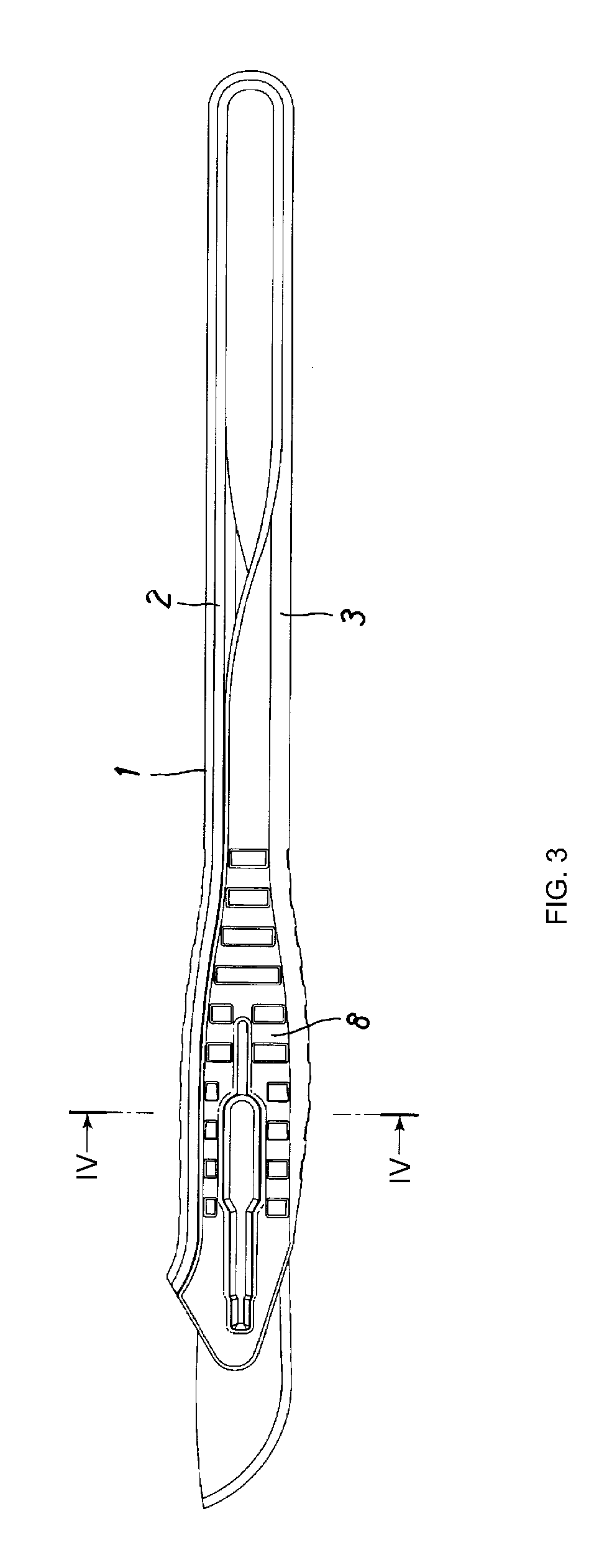Medical knife
a technology for medical devices and blades, applied in the field of medical devices, can solve the problems of high manufacturing cost, affecting the accuracy of the blade, and the ability to adjust the spacing of the two blades, and achieve the effect of convenient assembly, easy manufacturing, and convenient blade spacing chang
- Summary
- Abstract
- Description
- Claims
- Application Information
AI Technical Summary
Benefits of technology
Problems solved by technology
Method used
Image
Examples
Embodiment Construction
[0026]Next, embodiments of the present invention are described with reference to the drawings. Note that, in the present embodiment, the entire knife is disposable. As shown in FIG. 5 and FIG. 6, a handle 1 before being assembled in a medical knife is formed in the shape of tongs, and the handle-constituting parts 2, 3 of the handle 1 before assembly are formed in an already open configuration. Furthermore, as shown in FIG. 5, in the handle 1 before assembly, the handle-constituting parts 2, 3 face each other and, as shown in FIG. 7, these are formed in a configuration such that these are not offset from each other in the lateral width direction.
[0027]The handle 1 is formed from a flexible material, and for example, is integrally formed by injection molding a flexible thermoplastic resin such as polypropylene or polyethylene. The handle-constituting parts 2, 3 of the handle 1 are integrally joined by way of a U-shaped connecting part 4 at the rear ends thereof. As shown in FIG. 1 an...
PUM
 Login to View More
Login to View More Abstract
Description
Claims
Application Information
 Login to View More
Login to View More - R&D
- Intellectual Property
- Life Sciences
- Materials
- Tech Scout
- Unparalleled Data Quality
- Higher Quality Content
- 60% Fewer Hallucinations
Browse by: Latest US Patents, China's latest patents, Technical Efficacy Thesaurus, Application Domain, Technology Topic, Popular Technical Reports.
© 2025 PatSnap. All rights reserved.Legal|Privacy policy|Modern Slavery Act Transparency Statement|Sitemap|About US| Contact US: help@patsnap.com



